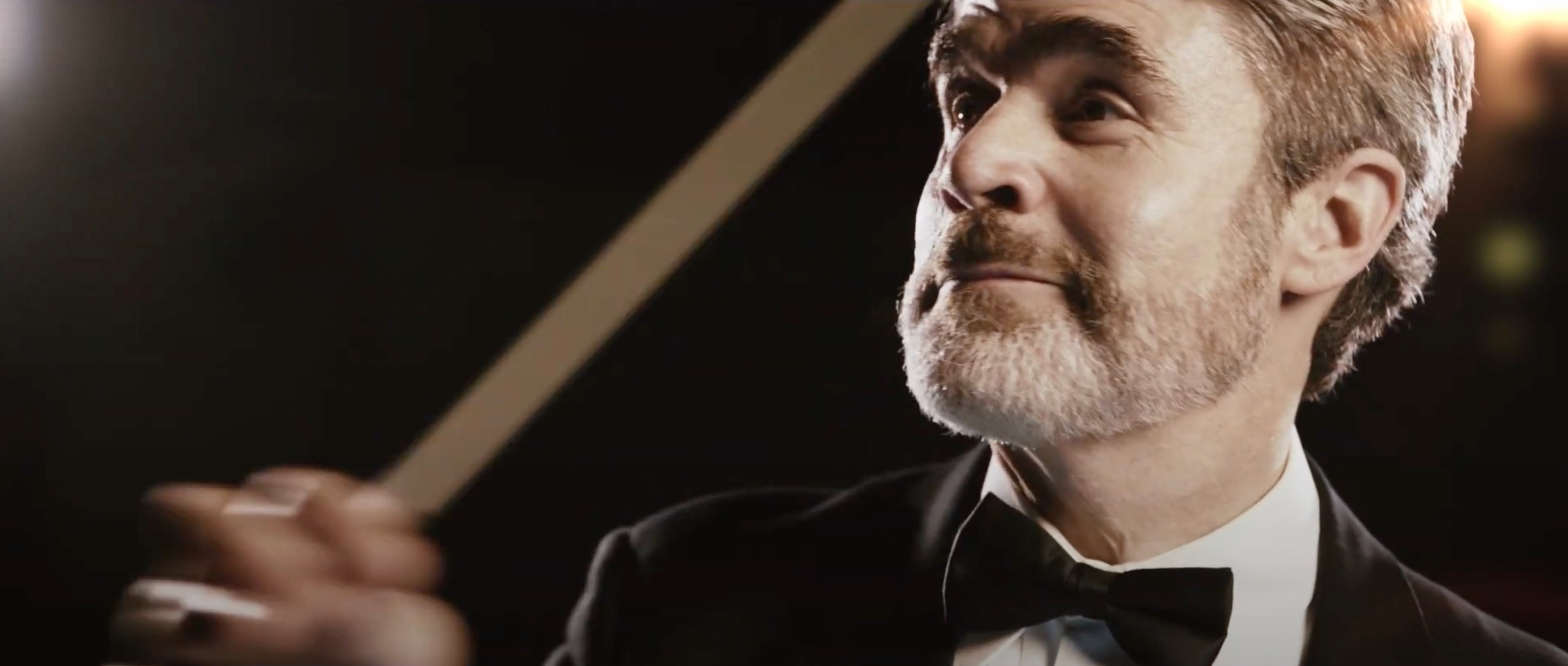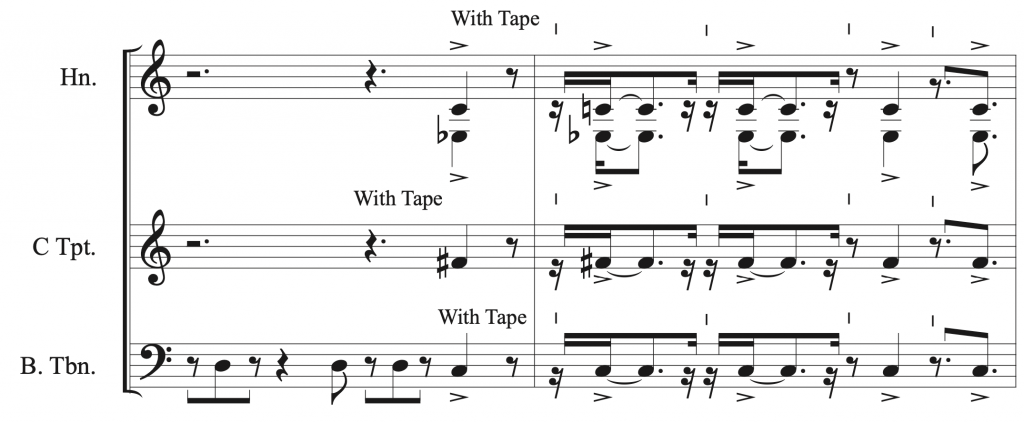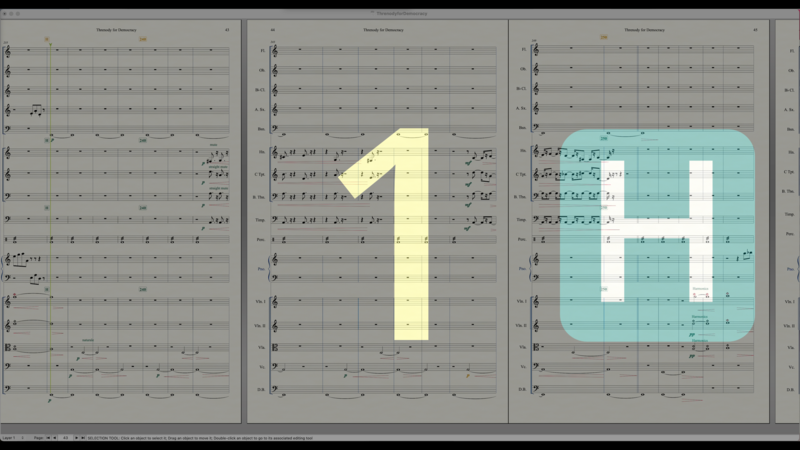Lately, I’ve had limited time to work on new compositions, so I decided to focus on something equally necessary—migrating my works from Finale to Dorico. I thought starting with some older, smaller ensemble pieces from my To Prelude Peace collection would be straightforward, but it turned out to be more complicated than expected.
The Challenges of Migration
I started with my Oboe & Bassoon duet, Sudan Lovers Holding Hands, which I had demoed in my Moving From Finale to Dorico YouTube video. This piece was written in an older version of Finale, where I used a workaround for a pickup note by hiding the rest on the first beat of the first measure. This caused problems during the import to Dorico. After updating this in the newer Finale and re-importing, I thought things would go smoothly—but that wasn’t the case.
The next task was fixing the titling. Despite filling in the project information in Finale, none of it carried over to Dorico, meaning I had to reenter everything manually—a frustrating waste of time.
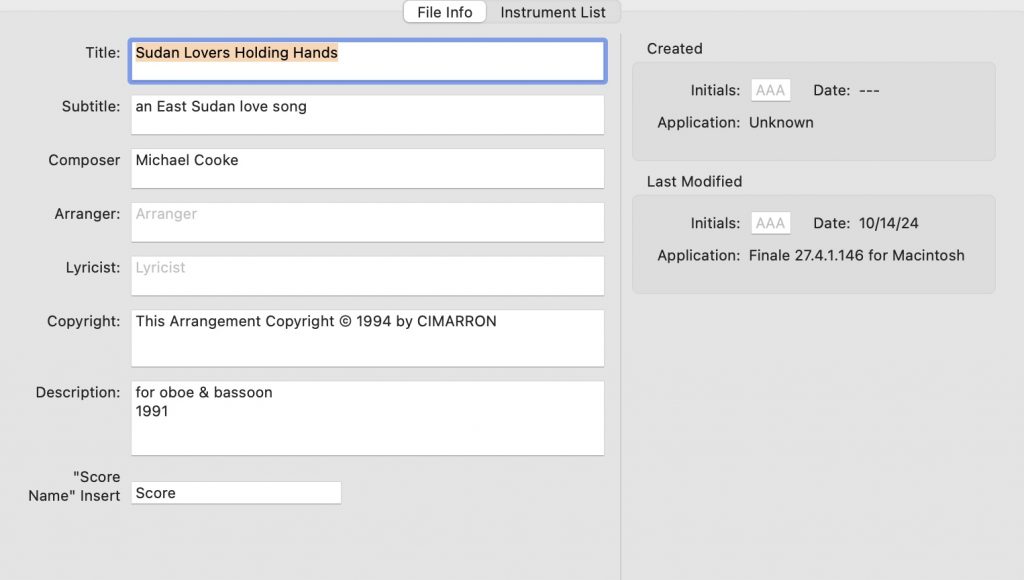
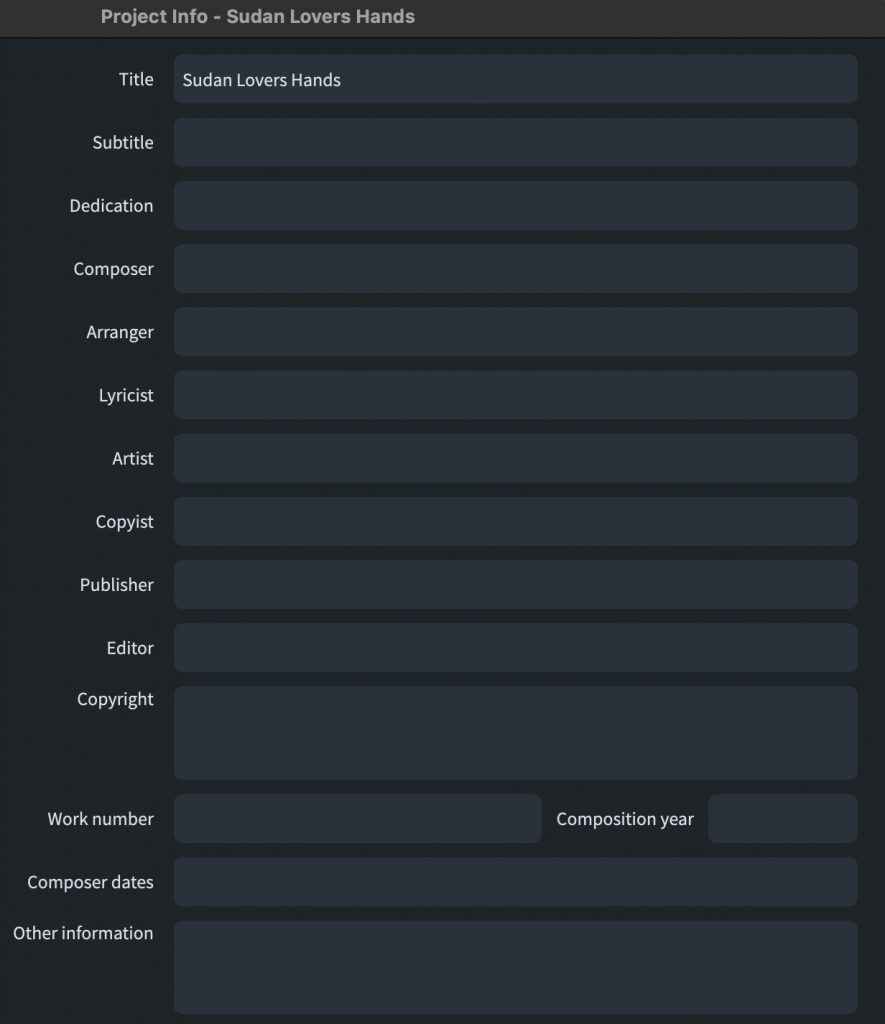
I also spent quite a bit of time learning Dorico’s page templates. Although time-consuming, I can now export and reuse these templates for future projects, which will save time in the long run. One major frustration, however, was the overlap of text boxes, which made it tricky to adjust the layout without accidentally selecting the wrong element.
After sorting out the layout, I realized that some of the rhythms weren’t notated as I had originally written, particularly in the meter changes between 3+2+2/8 (7/8) and 2+3+2/8 (7/8). I had to carefully go through the piece and correct several measures. After some effort, I managed to salvage the piece—it may not be publication-ready just yet, but it’s close.
Tackling “Celebration Dance”
Next, I moved on to Celebration Dance, which has two versions—one for string trio and another for woodwinds. The initial import into Dorico was a mess, with overlapping staves and awkward system breaks.
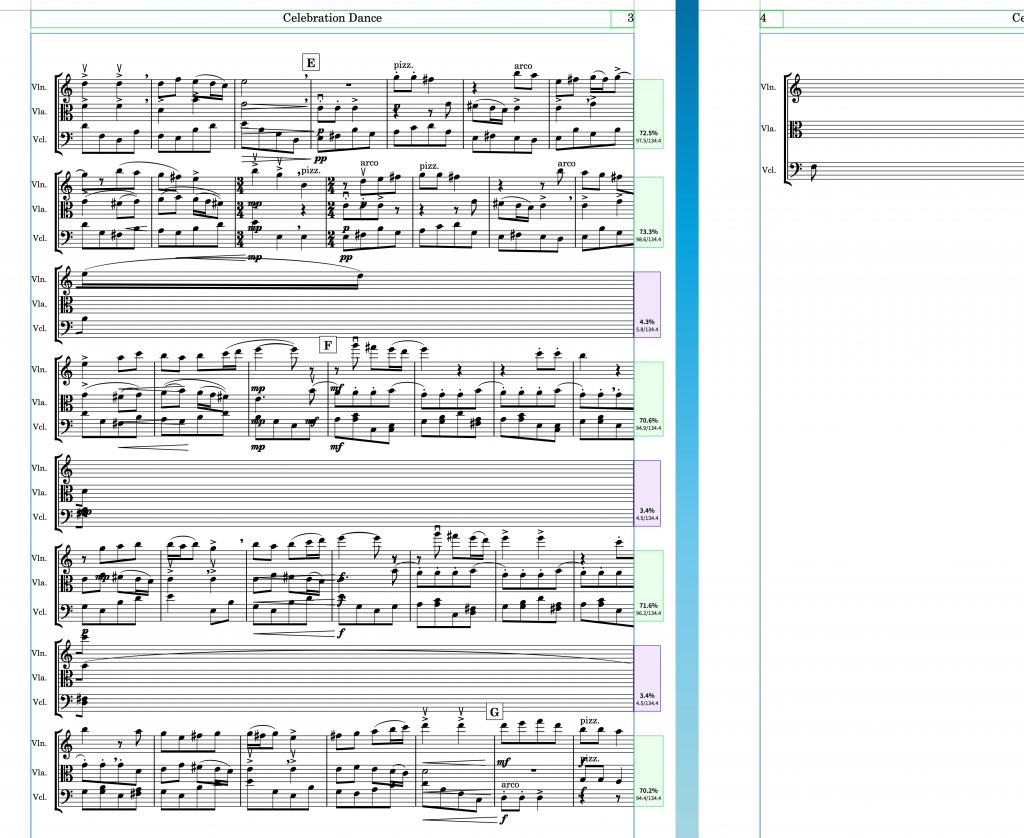
After some advice from the Dorico forums, I disabled system and frame breaks, which helped, but the layout remained cramped. Exporting from MuseScore and re-importing into Dorico gave better results. Using my previously created page templates sped up the titling process. I also found Dorico’s Bartók (snap) pizzicato too small, so I resized it, potentially adding it to a custom library later. Applying the same fixes to the woodwind version quickly brought it into shape.
Afterward, I revised the string version by refining the cello part. Originally, I had simplified the bassline to make the double stops more manageable, but I rewrote it to better capture the sound I envisioned, resulting in a new 2024 version.
Fine-Tuning the Sextet
The fourth piece in the collection, a sextet titled The Harmony of Peace, presented its own set of challenges. Even after turning off system and frame breaks, the layout remained cramped and inconsistent across pages. Following advice from the forums, I experimented with Layout Options, specifically adjusting Vertical Spacing and Justification settings, which finally provided a consistent layout.
I also encountered issues with beat groupings in the 7/8 measures. After fixing the groupings between 3+2+2/8 and 2+3+2/8, Dorico would unnecessarily reintroduce the time signature each time. I had to manually delete these excess time signatures to resolve the issue.
The first edition of this piece was notated by my publisher in Finale, but it contained printing errors, including missing notes and beats. As I only received the first edition from the publisher, I had to track down and correct those mistakes. I should double-check the original score, which was created in an old DOS notation program before Finale, to ensure everything is accurate.
One of the biggest challenges was getting the fermatas to appear correctly at the end of the piece. Although I eventually got them working, I’m not entirely sure how—I stumbled on the solution by accident. By the next piece, I figured out what I had done.
Revisiting Morning Call to Prayer
Finally, I tackled the solo trombone piece Morning Call to Prayer, knowing it would be tricky due to the microtones and my desire to restore the original box notation that my publisher had changed. The import from Finale was rough, with old custom glissando notations causing issues.
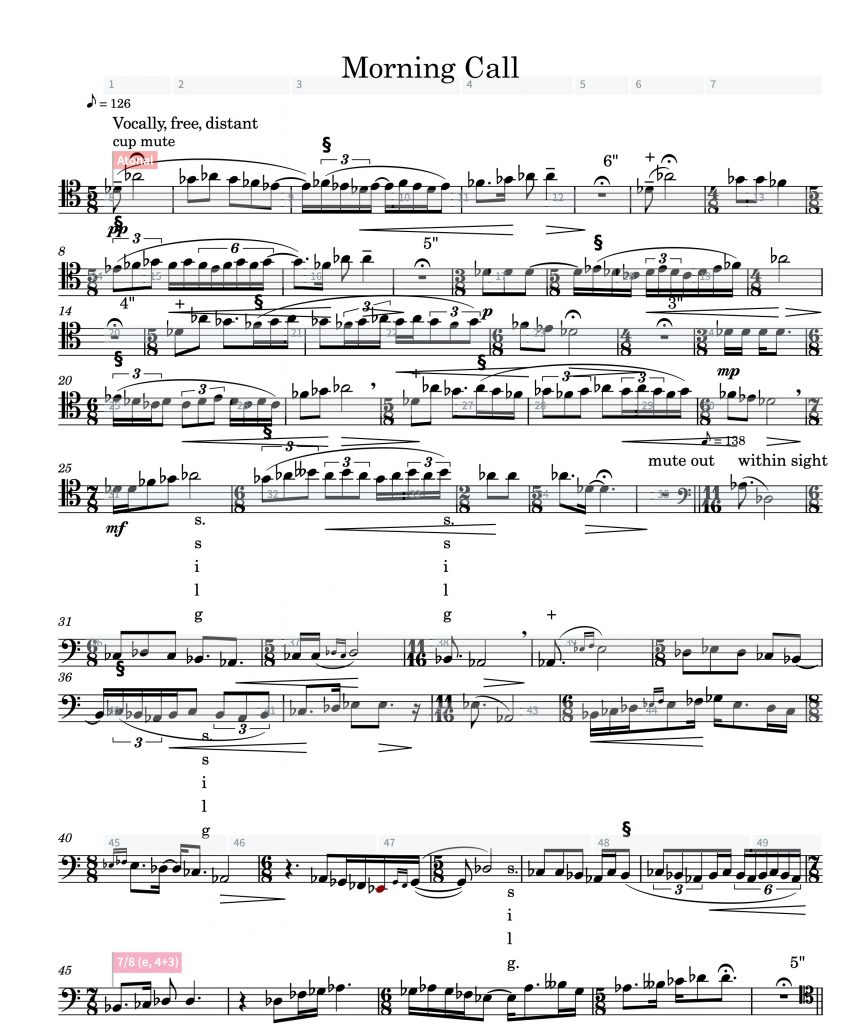
After removing these, things started to look better. One annoyance with Dorico is that elements only appear correctly in Engrave mode, whereas in Galley view in Write mode, they are misaligned above the staff, which was frustrating.
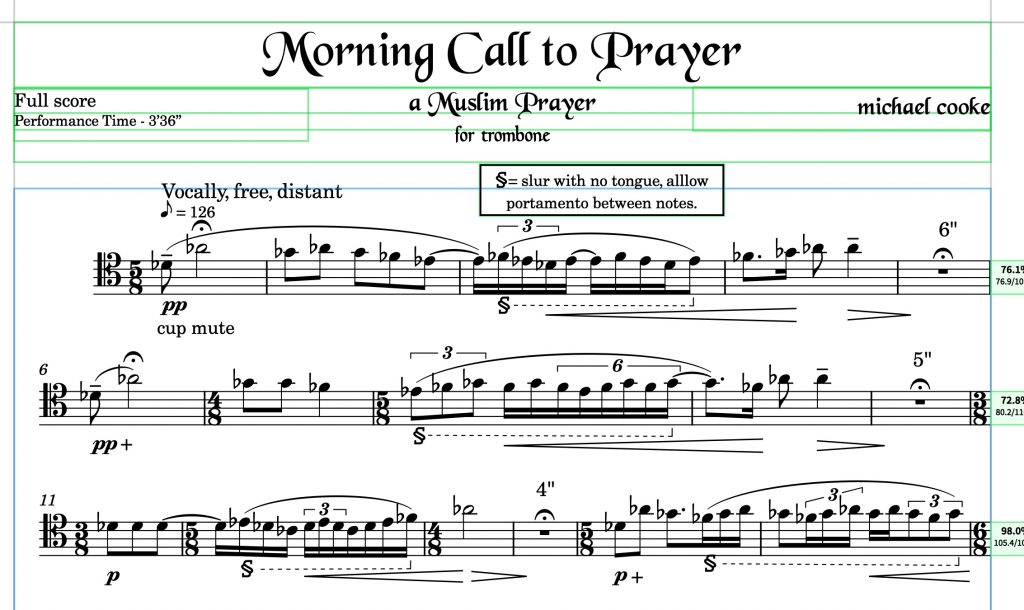

One of the biggest challenges was getting the fermatas to appear properly. After a lot of trial and error, I discovered that Dorico doesn’t allow a breath mark and a fermata on the same note, unlike Finale. After deleting the breath mark, the fermata appeared, and I used the rhythmic grid to re-add the breath mark on the last 16th note space. Problem solved.
Restoring the microtones was another challenge. I followed the manual but still couldn’t get them to appear. After consulting the forums, I learned that the tonality system must be set before inputting the atonal key signature. Once I did this, the microtones worked, though I still think it would be more intuitive to add microtones directly as accidentals. Maybe this method supports some hybrid key signature with microtones, though I’ve never seen that in practice.
I also struggled with getting the glissandi (portamentos) back the way I had them. I ultimately had to compromise by placing the text above the line instead of below as I had originally wanted.


Despite these frustrations, I’m glad to have saved the piece, though I still plan to rework it into its original box notation version later on.
The Journey Continues
This process of transferring my music from Finale to Dorico has been more challenging than expected. I’ve now saved four compositions, but many more await. It’s a long road, but I’m relieved to know that these pieces are being revived, updated, and prepared for future performances. There’s still much to do, but I’m ready to take it on, one score at a time.

